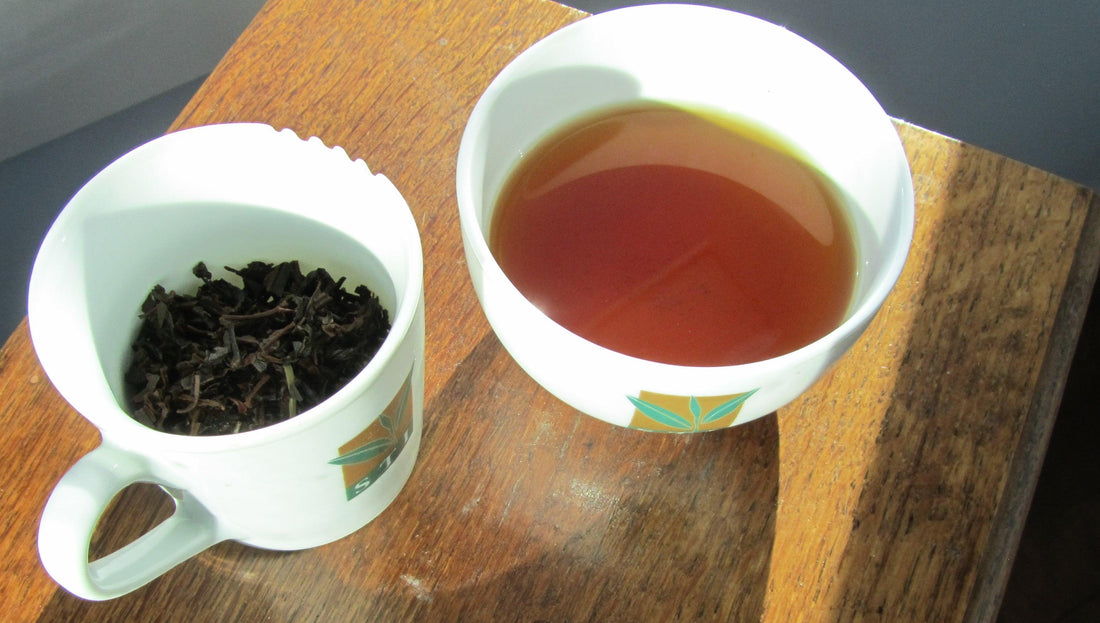
The Art of Black Tea
Michele LillieAt English Tealeaves, we offer 25 different plain/unflavored black teas from nine different countries. They all taste unique and you may wonder how that is possible. If you have not read our Tea Primer post on where tea comes from and how it is made, you may want to jump over there first.

Briefly, all teas (except herbal and fruit tea) come from the leaves of the same plant, Camellia Sinensis. This includes white, green, yellow, oolong, black and pu-erh teas. As explained in our Tea Primer, what variety of the tea plant is used and how the leaves are processed determine the type of tea that is produced. In this post, we will concentrate on black teas.
Black teas are the world’s most popular teas and account for the largest amount of tea produced in the world. The traditional countries of origin for black teas are:
- China
- India
- Sri Lanka
Today, you can also find black tea from many other countries. Here at English Tealeaves, we carry black teas from:
- China
- Colombia
- Georgia
- India
- Kenya
- Nepal
- Rwanda
- Sri Lanka
- Taiwan
- Vietnam
Here is the basic method of processing tea leaves to make black tea.
Plucking of the leaves
- It all begins with removing the leaves from the tea plant, known as plucking.
 The new growth is plucked as the bushes “flush” and push out new shoots. Plucking can be done by hand or machine.
The new growth is plucked as the bushes “flush” and push out new shoots. Plucking can be done by hand or machine. - In some areas, there is steady growth year-round and the plants flush regularly.
- In other areas, plucking only occurs from early Spring to late Autumn. An example is our 1st flush Darjeeling, which is plucked in the early spring, and our 2nd flush Darjeeling, which is plucked later in the summer.
Withering
- After plucking, the leaves must undergo moisture reduction, known as withering. It usually takes 16-20 hours. This helps to prepare the leaves for further processing.
- Physically, it softens the leaves so they do not shatter during rolling.
- Chemically, as the water content decreases, changes in the protein and carbohydrates contribute to the development of flavors and aromas.
- The amount of withering varies from a soft wither with very little water loss up to a very hard wither with extreme water loss. How much withering is done depends on the type of tea desired. The teas undergoing higher degrees of withering will have more complex aromas and flavors.
Rolling
- The process of rolling is what shapes the leaves. For quality loose-leaf teas, an orthodox method is used, which involves slower and more careful processes to try to maintain the integrity of the tea leaf.
- Disrupting of the cells, though, does occur and this is what causes the slow release of the enzymes that catalyze oxidation, the hallmark of black teas.
Oxidation
- What is distinctive about black teas as opposed to other types of teas is that they are fully oxidized. Some tea resources, especially older ones, will refer to these as fully fermented teas. That is an incorrect use of this term. Fermentation is a process that applies only to Dark teas such as Pu-erh. The correct term to use is oxidation.
- Oxidation is defined as the process whereby the leaves are broken so that the juices/enzymes are exposed to oxygen. This creates more color and flavor.
- The rate and length of oxidation are critical as it determines the final briskness, strength, thickness, aroma and flavor of your cup of tea.
- A rapid rate of oxidation promotes the development of thearubigins, resulting in a rich, darkly colored tea with lots of body. Although there is more color, strength and briskness, the flavors and aromas are less nuanced and complex.
- A slower rate results in higher theaflavin content with flavors that are more nuanced, mellow and complex.
Drying
- The final step is for the leaves to be fired in a hot air dryer. This simultaneously stops the oxidation process and dries the leaves.
- Ideally, the final moisture content should be no more than about 3%.
Categories of black teas
- Black teas can be categorized in different ways such as by country of origin, region of that country or even by estate name.
- In Sri Lanka they are known by growing region and by elevation (hi, mid, lo-grown.)
- Single origin – this is when all the leaves in that tea are from the same growing region. It may be a blend of leaves from different areas or estates of the same growing region or may be different grades of leaves blended to create a desired character in the cup.
- Single estate – if a tea is known as single estate, all the leaves are from plants grown on the same tea estate.
- Blended teas – these teas are not from one single origin. Rather, they are blended from multiple sources, even different countries. This enables the seller to create a consistent taste, color and aroma by adjusting the recipe to account for the inherent variations in leaves that are a product of A well-known example is English Breakfast.
So, why do our 25 black teas all taste unique? Although they are all oxidized black

teas, they come from different countries, different areas of those countries and undergo different processing. We would love to show you these differences and help you find your perfect cup. Sign up for one of our Tea Tasting events. Or, stop in and order a Tea Tasting Flight where you can taste three different teas side-by-side. Bring a friend with you to do the same and taste six teas all with their own unique flavor profile. We think you will be amazed!